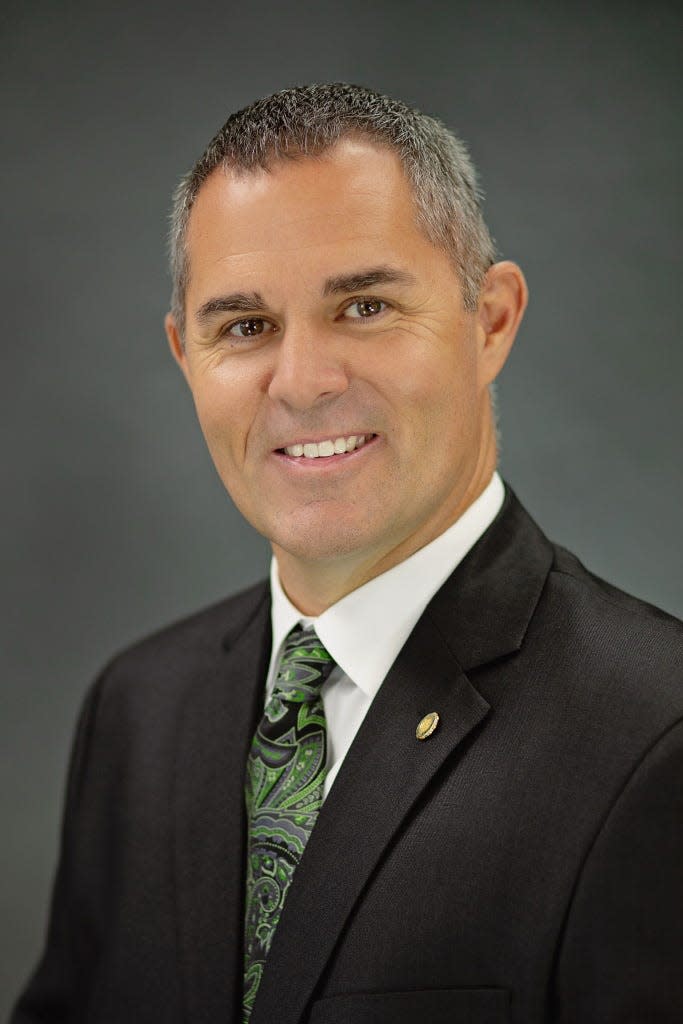Guests: Community colleges are fueling Oklahoma's workforce
Separated by nearly 250 miles and located in opposite corners of the state, Altus and Tulsa are a stark contrast to each other. With copious cotton fields, Altus is an agricultural center where aircrafts from the 97th Air Mobility Wing soar overhead. Tulsa, with its cityscape, is an urban center of tech and aerospace where skyscrapers ascend overhead.
As different as the landscapes are, they have something in common — a community college fueling economic growth. Workforce development is in the DNA of a community college. Regardless of urban or rural setting, the focus is helping individuals decide the first career or upskill for the next career, and Western Oklahoma State College and Tulsa Community College support individuals through the process of education and training.
Not just an economic driver for their residents, community colleges were founded on two key principles — access and affordability.
Coming from high school, cost was a consideration for Kyra Huckabay. Her parents were already helping to pay for her sister’s college debt. By making the decision to attend WOSC, Kyra will graduate debt-free with a liberal arts degree and transfer to a four-year university to pursue a degree in communications. Kyle Shay also considered cost when he moved back to Tulsa and wanted to return to college to complete his dream of becoming a professional pilot. The first in his family to go to college, he will graduate from TCC in May with plans to transfer to pursue a bachelor’s degree to become an aerospace engineer.
Whether a middle-class family putting a child (or second child) through college or a working adult returning to college for a new career, community colleges have low tuition compared to regional or comprehensive universities. Affordable means the dollar stretches further at a community college and makes a bachelor’s degree more affordable when transferring.
As a founding member of the Tulsa Higher Education Consortium, TCC collaborates to create a seamless transfer student experience with seven universities in northeast Oklahoma. Community colleges like WOSC can focus on the student as an individual, where they gain a support system and feel confident in their academic and life pursuits.
Community college graduates are prepared to go into the workforce or transfer to a four-year university. Our contribution is essential in addressing the state’s critical nursing shortage. According to the Oklahoma Board of Nursing 2020 Annual Report, community colleges produced more than half of the state’s registered nurses as 60% have an associate degree. With more than 400, TCC has its largest number of nursing students enrolled this semester as part of a multi-year expansion and will continue to add capacity each semester leading to 75 additional graduates each year by Fall 2027.
Stretching across three separate locations in southwest Oklahoma, Western’s nursing program provides training in Altus, Elk City and Lawton. The college added an evening program in Lawton and an online Licensed Practical Nurse to Registered Nurse transition program, making it easier for full-time, nontraditional students to start or continue their education. The student support delivered through an accessible online program allowed Amanda Ferguson to become an RN after 16 years as an LPN. This busy wife and mother of three kids, one with special needs, balanced children, activities and work, while going to college.
In Tulsa, Alyssa Woolf was accepted and started the TCC nursing program at 18, three months after graduating high school. While still in high school, she completed her prerequisites for the nursing program taking more than 30 college credit hours as a concurrent student. Her story demonstrates the value of dual credit enrollment, which has exploded across the state with some districts turning to dual credit as an option while struggling to hire teachers or provide more advanced classes.
Concurrent enrollment also introduces high schoolers to college, which is important whether a senior class of five in Olustee-Eldorado or more than 1,000 in Broken Arrow. Beyond saving time and money, national studies show concurrent enrollment drives positive results on college enrollment, college success and college completion rates.
While WOSC, the smallest community college and TCC, the largest community college in the state, are different, they are working toward the same goal — producing more college graduates. Not only do states with a high percentage of college graduates have higher per capita income, the future jobs of Oklahoma demand it. In seven short years, more than half of Oklahoma’s 100 critical occupations will require an associate degree or higher, including the top 29 highest paying jobs, according to Oklahoma Works.
Community colleges play a critical role in advancing our state from corner to corner. Founded to help individuals get into the workforce and to earn a family-sustaining wage, these institutions are paving the way and fueling the workforce needed for today and tomorrow.


Chad Wiginton is president of Western Oklahoma State College. Leigh Goodson is president of Tulsa Community College.
This article originally appeared on Oklahoman: Guests: Community colleges play critical role, fuel Oklahoma workforce

